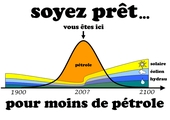Christophe wrote:Question: why is there not a pre-inflated bladder to compensate for the expansion in all DHW tanks?
exactly! a small bladder inside the water heater will cost less than a bladder accumulator added next to the water heater
I thought about it the first time I saw this little accumulator next to a 200l water heater
but the waste of water costs nothing to the manufacturer or to the merchant of material, why would they break the head
something else to finish the development of water heaters! a large drain valve to empty the powdered limestone that accumulates there: I have already dismantled it with half the volume occupied by this limestone: each time the water comes out through the valve it gets stuck in and makes it leak even more




